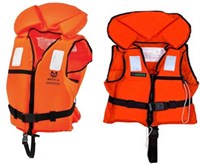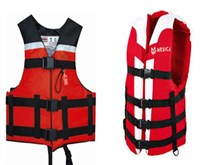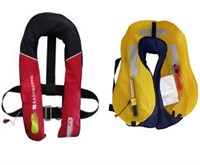×
T.C. İÇİŞLERİ BAKANLIĞI
WEB SİTESİ GİZLİLİK VE ÇEREZ POLİTİKASI
Web sitemizi ziyaret edenlerin kişisel verilerini 6698 sayılı Kişisel Verilerin Korunması Kanunu uyarınca işlemekte ve gizliliğini korumaktayız. Bu Web Sitesi Gizlilik ve Çerez Politikası ile ziyaretçilerin kişisel verilerinin işlenmesi, çerez politikası ve internet sitesi gizlilik ilkeleri belirlenmektedir.
Çerezler (cookies), küçük bilgileri saklayan küçük metin dosyalarıdır. Çerezler, ziyaret ettiğiniz internet siteleri tarafından, tarayıcılar aracılığıyla cihazınıza veya ağ sunucusuna depolanır. İnternet sitesi tarayıcınıza yüklendiğinde çerezler cihazınızda saklanır. Çerezler, internet sitesinin düzgün çalışmasını, daha güvenli hale getirilmesini, daha iyi kullanıcı deneyimi sunmasını sağlar. Oturum ve yerel depolama alanları da çerezlerle aynı amaç için kullanılır. İnternet sitemizde çerez bulunmamakta, oturum ve yerel depolama alanları çalışmaktadır.
Web sitemizin ziyaretçiler tarafından en verimli şekilde faydalanılması için çerezler kullanılmaktadır. Çerezler tercih edilmemesi halinde tarayıcı ayarlarından silinebilir ya da engellenebilir. Ancak bu web sitemizin performansını olumsuz etkileyebilir. Ziyaretçi tarayıcıdan çerez ayarlarını değiştirmediği sürece bu sitede çerez kullanımını kabul ettiği varsayılır.
1.Kişisel Verilerin İşlenme Amacı
Web sitemizi ziyaret etmeniz dolayısıyla elde edilen kişisel verileriniz aşağıda sıralanan amaçlarla T.C. İçişleri Bakanlığı tarafından Kanun’un 5. ve 6. maddelerine uygun olarak işlenmektedir:
- T.C. İçişleri Bakanlığı tarafından yürütülen ticari faaliyetlerin yürütülmesi için gerekli çalışmaların yapılması ve buna bağlı iş süreçlerinin gerçekleştirilmesi,
- T.C. İçişleri Bakanlığı tarafından sunulan ürün ve hizmetlerden ilgili kişileri faydalandırmak için gerekli çalışmaların yapılması ve ilgili iş süreçlerinin gerçekleştirilmesi,
- T.C. İçişleri Bakanlığı tarafından sunulan ürün ve hizmetlerin ilgili kişilerin beğeni, kullanım alışkanlıkları ve ihtiyaçlarına göre özelleştirilerek ilgili kişilere önerilmesi ve tanıtılması.
2.Kişisel Verilerin Aktarıldığı Taraflar ve Aktarım Amacı
Web sitemizi ziyaret etmeniz dolayısıyla elde edilen kişisel verileriniz, kişisel verilerinizin işlenme amaçları doğrultusunda, iş ortaklarımıza, tedarikçilerimize kanunen yetkili kamu kurumlarına ve özel kişilere Kanun’un 8. ve 9. maddelerinde belirtilen kişisel veri işleme şartları ve amaçları kapsamında aktarılabilmektedir.
3.Kişisel Verilerin Toplanma Yöntemi
Çerezler, ziyaret edilen internet siteleri tarafından tarayıcılar aracılığıyla cihaza veya ağ sunucusuna depolanan küçük metin dosyalarıdır. Web sitemiz ziyaret edildiğinde, kişisel verilerin saklanması için herhangi bir çerez kullanılmamaktadır.
4.Çerezleri Kullanım Amacı
Web sitemiz birinci ve üçüncü taraf çerezleri kullanır. Birinci taraf çerezleri çoğunlukla web sitesinin doğru şekilde çalışması için gereklidir, kişisel verilerinizi tutmazlar. Üçüncü taraf çerezleri, web sitemizin performansını, etkileşimini, güvenliğini, reklamları ve sonucunda daha iyi bir hizmet sunmak için kullanılır. Kullanıcı deneyimi ve web sitemizle gelecekteki etkileşimleri hızlandırmaya yardımcı olur. Bu kapsamda çerezler;
İşlevsel: Bunlar, web sitemizdeki bazı önemli olmayan işlevlere yardımcı olan çerezlerdir. Bu işlevler arasında videolar gibi içerik yerleştirme veya web sitesindeki içerikleri sosyal medya platformlarında paylaşma yer alır.
Teknik olarak web sitemizde kullanılan çerez türleri aşağıdaki tabloda gösterilmektedir.
|
Oturum Çerezleri
(Session Cookies)
|
Oturum çerezleri ziyaretçilerimizin web sitemizi ziyaretleri süresince kullanılan, tarayıcı kapatıldıktan sonra silinen geçici çerezlerdir. Amacı ziyaretiniz süresince İnternet Sitesinin düzgün bir biçimde çalışmasının teminini sağlamaktır.
|
Web sitemizde çerez kullanılmasının başlıca amaçları aşağıda sıralanmaktadır:
- • İnternet sitesinin işlevselliğini ve performansını arttırmak yoluyla sizlere sunulan hizmetleri geliştirmek,
5.Çerez Tercihlerini Kontrol Etme
Farklı tarayıcılar web siteleri tarafından kullanılan çerezleri engellemek ve silmek için farklı yöntemler sunar. Çerezleri engellemek / silmek için tarayıcı ayarları değiştirilmelidir. Tanımlama bilgilerinin nasıl yönetileceği ve silineceği hakkında daha fazla bilgi edinmek için www.allaboutcookies.org adresi ziyaret edilebilir. Ziyaretçi, tarayıcı ayarlarını değiştirerek çerezlere ilişkin tercihlerini kişiselleştirme imkânına sahiptir.
6.Veri Sahiplerinin Hakları
Kanunun ilgili kişinin haklarını düzenleyen 11 inci maddesi kapsamındaki talepleri, Politika’da düzenlendiği şekilde, ayrıntısını Bakanlığımıza ileterek yapabilir. Talebin niteliğine göre en kısa sürede ve en geç otuz gün içinde başvuruları ücretsiz olarak sonuçlandırılır; ancak işlemin ayrıca bir maliyet gerektirmesi halinde Kişisel Verileri Koruma Kurulu tarafından belirlenecek tarifeye göre ücret talep edilebilir.











 © 2025 Turkish Coast Guard Command
© 2025 Turkish Coast Guard Command